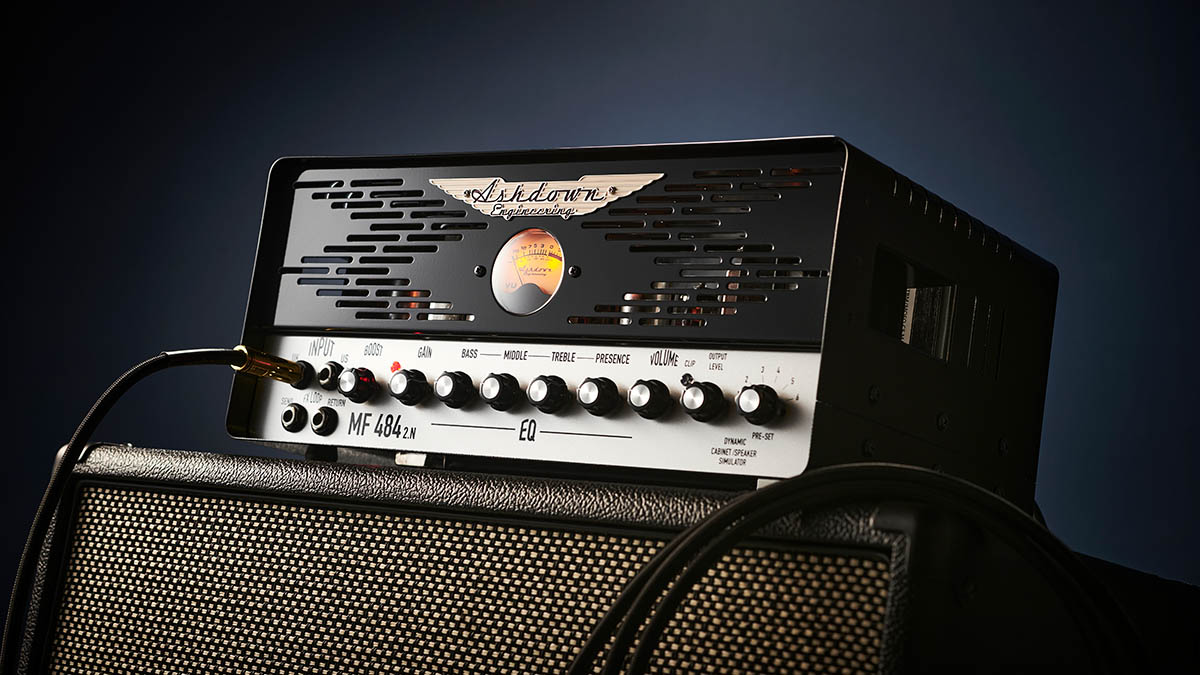Guitar World Verdict
While it may not be the cheapest 30-watt tube head available out there, Ashdown’s MF484 2.N is a serious powerhouse of tone that’s built to last. As an amp that’s aimed at professional players and serious amateurs, we reckon it’s great value for money.
Pros
- +
Well-made, straightforward, compact head.
- +
At home on stage or in studio.
- +
Vintage and modern tones.
- +
Plenty of power.
- +
Embedded Two Notes speaker emulation.
Cons
- -
No front-panel switch for boost function.
- -
Positioning of hand-grips makes it quite awkward to carry.
You can trust Guitar World
While best known for its bass amps, which is practically an industry standard, Ashdown’s guitar amp range is just as tempting – perhaps even more so now as the company is one of the latest manufacturers to produce a Two Notes Torpedo-loaded amplifier.
Now, speaker cabinet emulation has come of age in the last decade, with analogue filtering replaced by digital impulse response (IR) technology, which in turn is being superseded by dynamic impulse response tools. These combine hundreds if not thousands of static IRs in apps and create real-time changes in virtual room size, cabinet type and microphone type and placement for often scarily realistic ‘amp in a room’ effects.
Currently the hot name is French company Two Notes, which has seen a surge in popularity of its excellent Torpedo cabinet sim driven in part by the technology being made available to amplifier builders to embed in their own products. Which neatly brings us back to the amp we’re looking at here: Ashdown’s new MF484 2.N head.
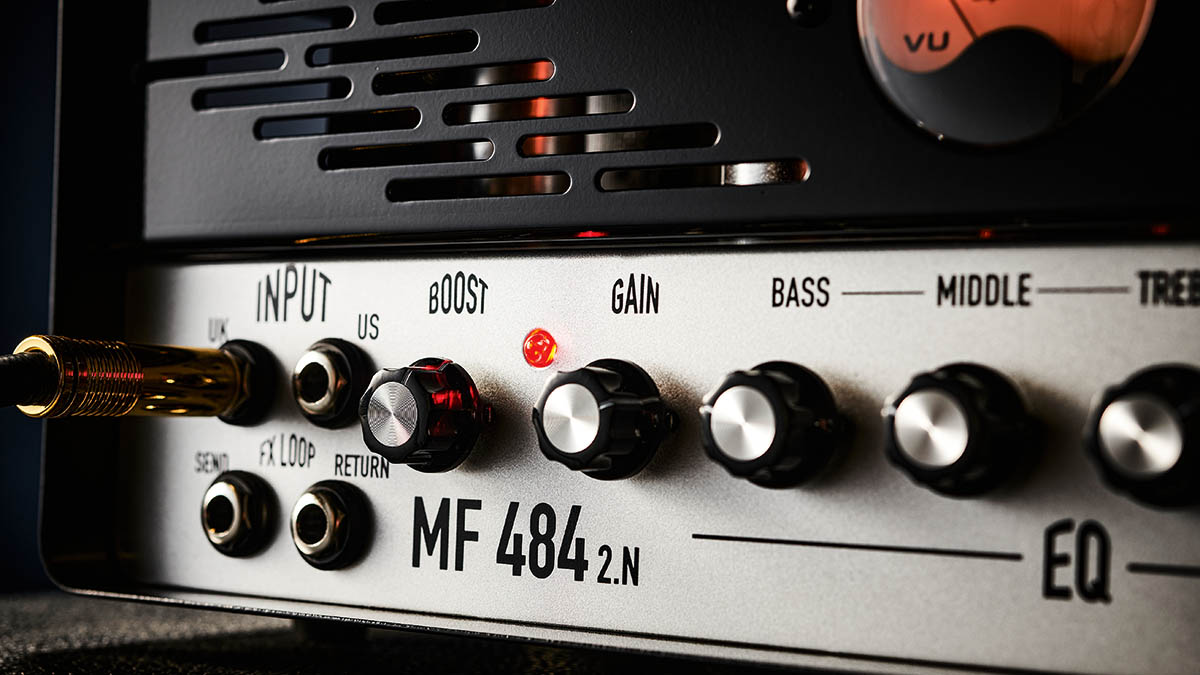
The good-looking MF484 2.N head has typically robust build quality behind its all-steel chassis, which supports a substantial pair of mains and output transformers and a choke. The steelwork is finished in a tough black gloss enamel that contrasts nicely with the silver control panel, while generous perforations and a small permanently-on fan help keep the electronics cool.
The amplifier components are mostly contained on one large high-quality printed circuit board, including the front-panel controls and all seven tube bases. There’s clean, bright soldering and neat wiring, and the resistors are close‑tolerance metal film types, which helps keep hiss down to a minimum. There are smaller boards for the front- and rear-panel jack sockets, while the Two Notes wizardry lives on a separate vertical PCB behind the rear panel.
Cabinet emulation aside, the MF484 is a fairly straightforward single-channel all-tube design, with three ECC83 preamp tubes and a quartet of cathode-biased EL84s producing around 30 watts of power to drive your favourite enclosure.
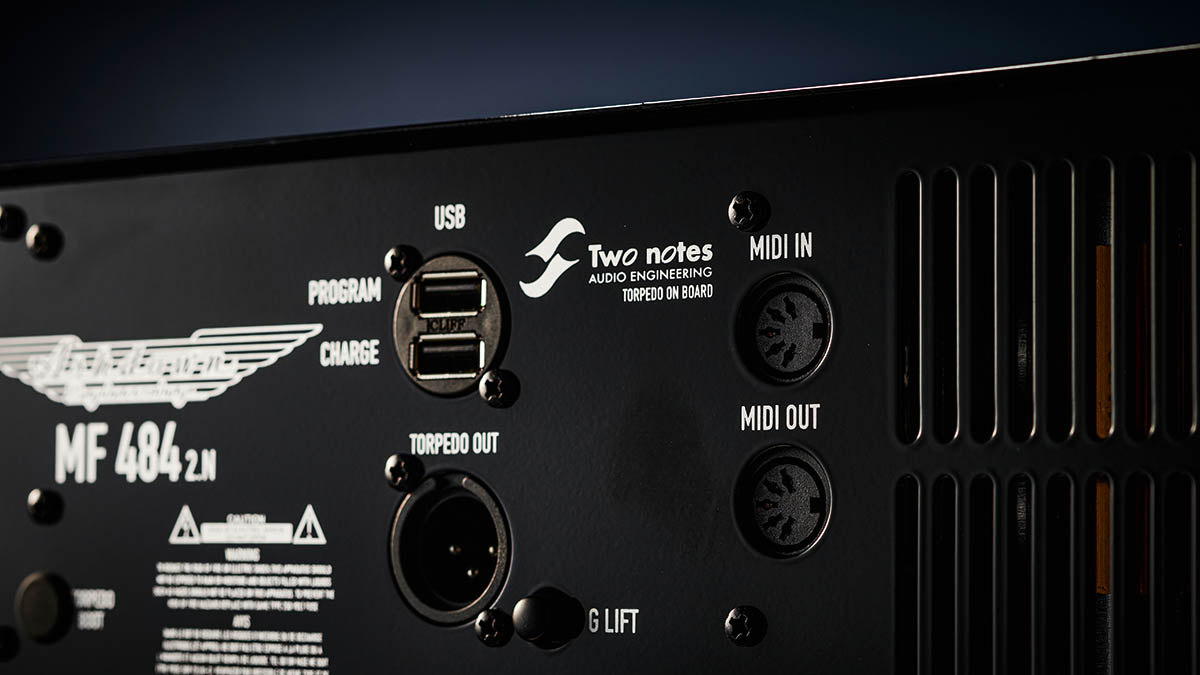
The front panel is neatly laid out with a pair of input jacks that are pre-EQ’d for US- or UK-inspired tones, underneath which you’ll find a handy send/return for the MF484’s series effects loop.
These are followed by a level control and indicator LED for the MF484’s boost, then regular controls for gain, bass middle, treble, presence and volume. On the far right, there’s a familiar six-position rotary switch that selects the pre-loaded Torpedo virtual cabinets, together with a Torpedo output level control.
The MF484 2.N goes further than some other Torpedo-equipped amps by including a line-in as well as a direct DI output, making it possible to use the Torpedo for reamping
Moving to the rear panel, you’ll find plenty of connectivity options here, with a pair of speaker jacks for 16- and eight-ohm cabinets, a headphones jack and a socket for the FS1 footswitch, which is needed to toggle the boost function because there’s no front-panel switch.
There’s a USB ‘A’ socket to connect to the Torpedo Remote app, which is used to edit, save and load virtual cabinet presets, together with a handy second USB charger outlet to keep your mobile device topped up. A pair of five-pin DIN sockets handle MIDI in and out control messages for the Torpedo, while the cabinet emulated audio is output from a balanced XLR with a handy ground lift switch.
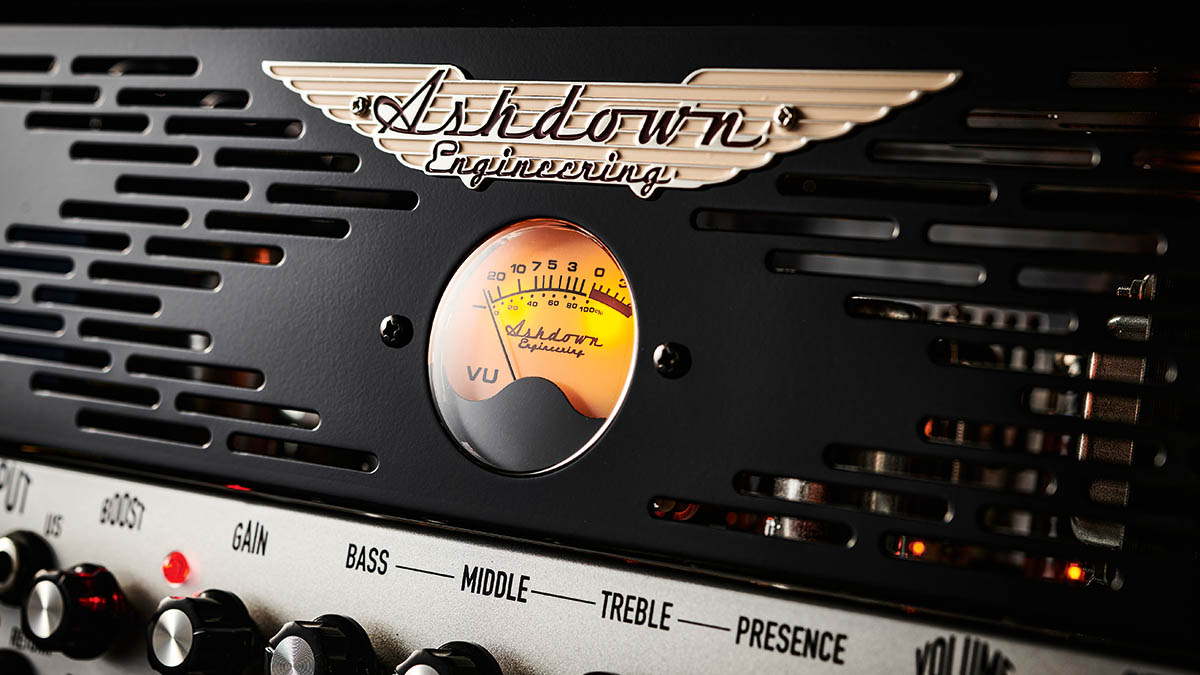
The MF484 2.N goes further than some other Torpedo-equipped amps by including a line-in as well as a direct DI output, making it possible to use the Torpedo for reamping, with a DI Link push-button switch to link/unlink the direct DI and DynIR sockets so the signal can be isolated.
Despite being relatively light, this amp is somewhat awkward to carry. The recessed handgrips aren’t easy to hold and they’re set toward the front of the case while all the weight is at the back. It’s also a little disappointing that there’s no front-panel option to toggle the boost function. However, the default setting is ‘On’, so there’s no loss of functionality.
Minor niggles aside, the MF484 2.N is a seriously well-made head and looks great, too, with the coveted Ashdown badge topping the trademark backlit VU meter.
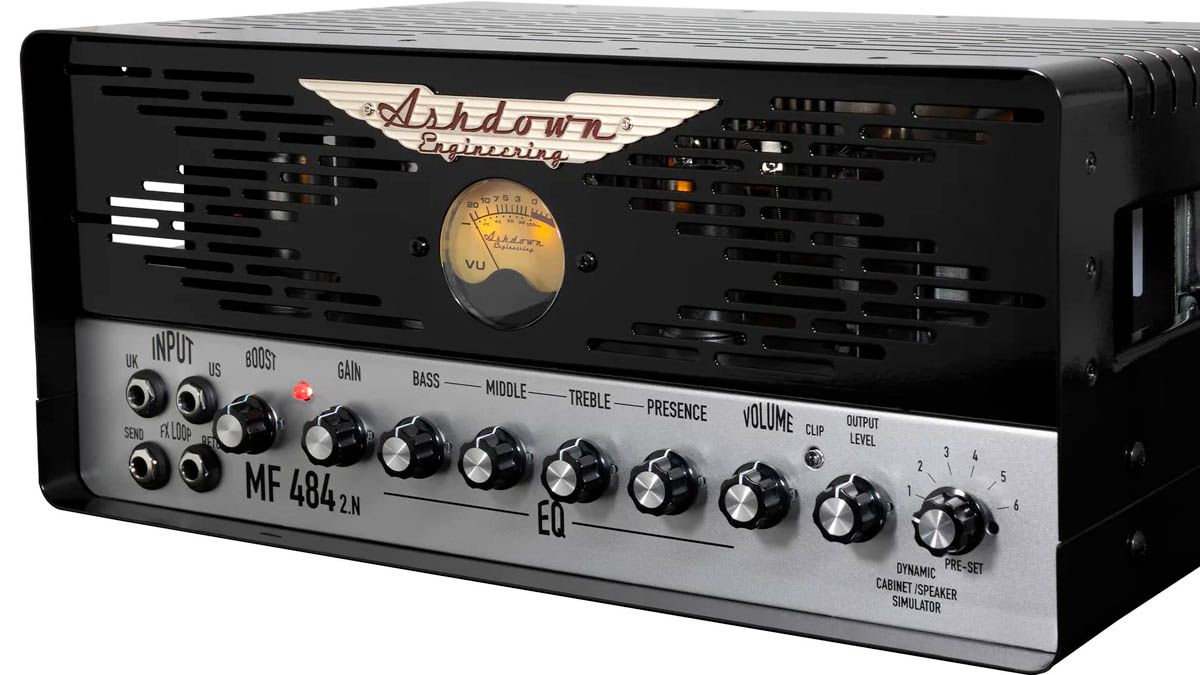
Feel & Sounds
The Ashdown purrs into life with just a faint whirr from the rear-mounted cooling fan and practically zero hiss and hum, making it a good choice for home recording.
The built-in reactive load means you don’t have to connect it to a speaker cabinet if you just want to use the emulated outputs, so you can easily fit it into smaller home-studio surroundings. The dual-input jacks are independently voiced: the UK input is tighter and more compressed, while the US jack has less gain, resulting in higher headroom and a cleaner, airy tone.
Overall, the MF484’s tone is a useful blend of Vox and vintage Marshall influence, with a punchy midrange and minimal damping that’s equally flattering to humbuckers and single coils.
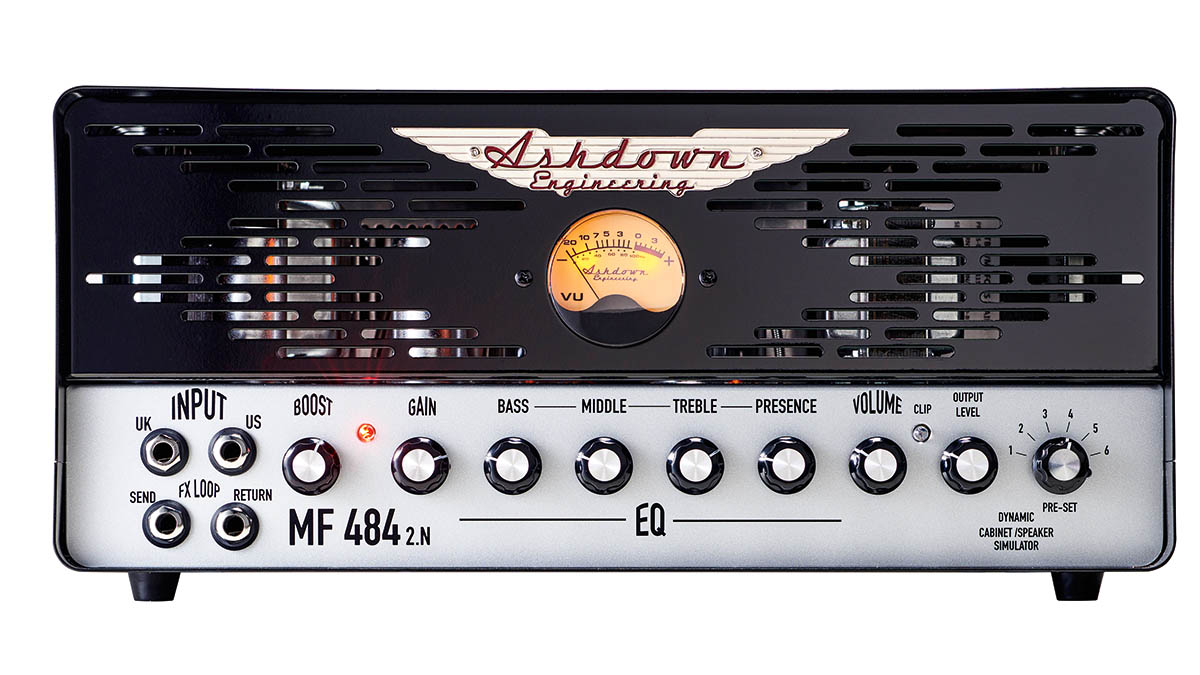
The boost and gain level controls work independently and have different characters: the gain control’s overdrive is looser and more responsive; the boost is more aggressive, with enough range to produce decently filthy modern rock/metal when turned all the way up.
Blending these two controls produces a wide range of vintage and modern tones. We found a great balance with the boost on roughly a quarter and the gain at around three quarters.
The MF484 is very responsive to player input, so you can easily clean up the overdrive by backing off the guitar’s volume control or reducing your pick attack. This works especially well on guitars fitted with beefy humbuckers – our Les Paul sounded great for leads with the bridge pickup’s volume control fully open and equally impressive for spanky clean rhythm parts with the volume knocked back to around 4.
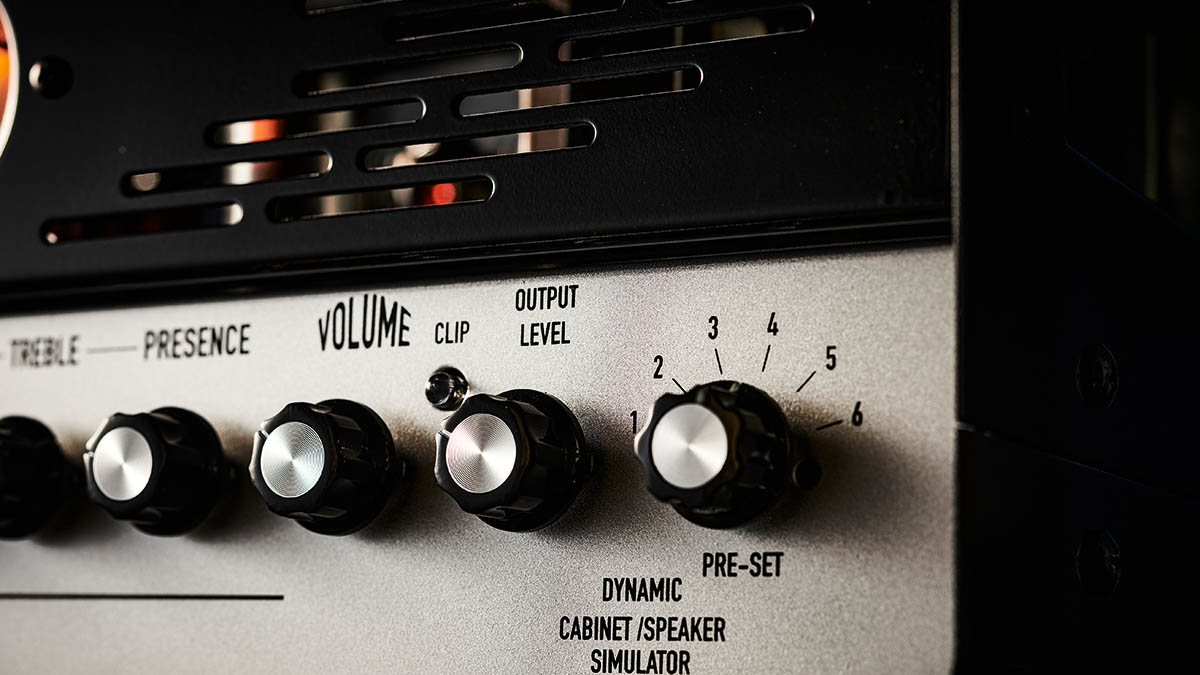
We’ve covered the Two Notes cabinet emulation before and the Ashdown version is equally impressive with a useful selection of pre-loaded cabinet types that provide instant sonic gratification when hooked up to a console for live or studio use.
With the Torpedo Remote app installed on your desktop you can edit, save and load the presets in real-time, accessing them either from the MF484 2.N’s front-panel switch or any suitable MIDI floor controller.
If you want more, the optional Wall Of Sound software comes with up to 32 DynIR cabinets, plus over 450 more available to download and play with. Viewed from our Windows 10 desktop, the Torpedo Remote app is beautifully rendered and logically laid out, making it easy and fun to use.
Verdict
With its embedded Two Notes technology, Ashdown’s MF484 2.N makes a lot of sense. The reactive load means you can use it without an enclosure, either in the studio or for quiet stages such as churches and theatres, providing sound engineers with consistently great tones to work with.
On the other hand, when the opportunity to make some noise presents itself, you can also plug in a suitable speaker cabinet and rely on the head’s punchy 30 watts of pure tube tone to get your point across on any size of stage, using the Two Notes DI to augment it through the PA if needed.
We really like the wide range of vintage and contemporary sounds found by blending the MF484’s gain and boost overdrives, which are ideal for most musical genres.
Specs
- PRICE: $/£1,399
- ORIGIN: China
- TYPE: Tube preamp, tube power amp
- OUTPUT: 30W RMS
- DIMENSIONS: 650 (w) x 245 (d) x 170mm (h)
- WEIGHT (kg/lb): 10/22
- CABINET: Steel
- CHANNELS: 1, with footswitchable boost
- CONTROLS: Boost level, gain, bass, middle, treble, presence, volume. Cabinet sim out and cabinet simulator switch
- FOOTSWITCH: FS1 footswitch (not supplied) toggles boost function
- ADDITIONAL FEATURES: Integrated Two Notes DynIR cabinet simulation, integrated reactive load, separate DI out and Two Notes DI in for reamping
- OPTIONS: Ashdown’s premium Greenback G12-M loaded AGM-112 and Jensen P10R Alnico AGM-210 cabs are both £399; the AGM-212 vertical 2x12 G12-M cab is £639
- CONTACT: Ashdown Engineering
Nick Guppy was Guitarist magazine's amp guru for over 20 years. He built his first valve amplifier at the age of 12 and bought, sold and restored many more, with a particular interest in Vox, Selmer, Orange and tweed-era Fenders, alongside Riveras and Mark Series Boogies. When wielding a guitar instead of soldering iron, he enjoyed a diverse musical career playing all over the UK, including occasional stints with theatre groups, orchestras and big bands as well as power trios and tributes. He passed away suddenly in April 2024, leaving a legacy of amplifier wisdom behind him.
"I never use my tube amp at home now, because I have a Spark Live": 5 reasons you should be picking up the Positive Grid Spark Live in the massive Guitar Month sale
“Our goal is to stay at the forefront of amplification innovation”: How Seymour Duncan set out to create the ultimate bass amp solution by pushing its PowerStage lineup to greater heights
